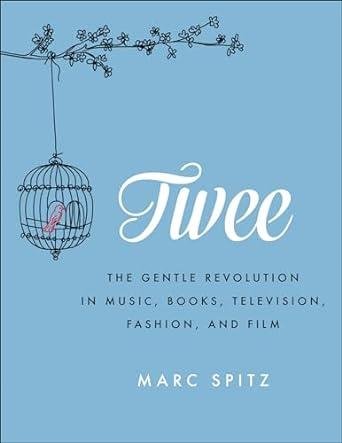Twee: Understanding the Cultural Phenomenon
In recent years, "Twee" has emerged as a significant cultural movement, characterized by a return to the whimsical, the charming, and the nostalgically quaint. From fashion to music, from literature to lifestyle choices, Twee has left an indelible mark on contemporary society. This article delves deep into the origins, key characteristics, and the broader cultural implications of Twee, offering a comprehensive understanding of this unique phenomenon.
The Origins of Twee
Twee, as a term, originally derived from the British baby talk pronunciation of "sweet," which itself signifies a certain charming innocence. The roots of Twee can be traced back to the mid-20th century, but its modern incarnation is often linked to the indie pop and indie rock scenes of the 1980s and 1990s. Bands like Belle and Sebastian, with their gentle melodies and earnest lyrics, epitomized the Twee aesthetic, which often celebrates the small, the intimate, and the whimsical.
The rise of Twee can also be seen as a reaction against the aggressive, hyper-commercialized mainstream culture. In a world dominated by mass production and digital excess, Twee offers a retreat into a more handcrafted, personalized, and nostalgic world. This aesthetic values the imperfect and the human, often highlighting the beauty in everyday life.
Key Characteristics of Twee
Twee is not just an aesthetic but a lifestyle choice that encompasses various aspects of daily living. Here are some key characteristics that define the Twee movement:
- Fashion: Twee fashion often includes vintage-inspired clothing, pastel colors, floral patterns, and quirky accessories. Think Peter Pan collars, brogues, and cardigans. It's about dressing in a way that feels timeless and personal.
- Music: The music associated with Twee is typically gentle, melodic, and often features acoustic instruments. Lyrics are often introspective, romantic, and whimsical, celebrating the minutiae of everyday life.
- Literature and Art: Twee literature and art often focus on the personal and the small-scale. There's a celebration of the mundane and the everyday, with an emphasis on personal stories and handcrafted aesthetics.
- Home Decor: Twee home decor favors vintage furniture, handmade items, and a mix of patterns and textures. It's about creating a space that feels cozy, nostalgic, and uniquely personal.
- Lifestyle: The Twee lifestyle emphasizes simple pleasures, from baking at home to crafting. It's about finding joy in the small things and creating a life that feels meaningful and authentic.
The Cultural Impact of Twee
The impact of Twee on contemporary culture is significant, influencing not just aesthetics but also broader social and cultural trends. One of the most notable impacts is the rise of the "maker movement," which celebrates handcrafted and artisanal goods. This movement aligns closely with Twee's emphasis on the personal and the handmade, reflecting a broader shift towards valuing craftsmanship and individuality over mass production.
Twee has also influenced the way we think about technology and its role in our lives. While Twee is not inherently anti-technology, it does advocate for a more mindful and intentional use of technology. This can be seen in the popularity of digital detoxes and the emphasis on analog activities like journaling and scrapbooking within the Twee community.
Moreover, Twee has played a role in the resurgence of interest in vintage and second-hand goods. The fashion industry, in particular, has seen a significant shift towards sustainable practices, with many consumers opting for vintage and thrifted clothing over fast fashion. This aligns with Twee's values of sustainability, individuality, and a preference for the timeless over the trendy.
Criticisms of Twee
Despite its many positive aspects, Twee has not been without its critics. Some argue that Twee can be overly sentimental and escapist, focusing too much on the past and the personal at the expense of engaging with broader social and political issues. There is also the criticism that Twee, in its celebration of nostalgia, can sometimes romanticize and idealize the past, glossing over its complexities and difficulties.
Furthermore, there is a concern that Twee can be exclusive, catering primarily to those who have the time and resources to engage in its lifestyle. The emphasis on handmade and artisanal goods, for example, can be prohibitively expensive for many people, making Twee an inaccessible ideal for those without the means to fully participate.
The Future of Twee
As we look to the future, it is clear that Twee will continue to evolve and adapt, reflecting broader cultural shifts and changes. One possible direction is a greater emphasis on inclusivity and accessibility, ensuring that the values of craftsmanship, individuality, and mindfulness are available to all, regardless of socioeconomic status.
There is also the potential for Twee to engage more directly with contemporary social and political issues. By integrating its values of care, authenticity, and mindfulness into broader movements for social change, Twee can become a powerful force for positive transformation in the world.
Conclusion
Twee is more than just an aesthetic; it is a way of living that celebrates the small, the personal, and the whimsical. In a world that often feels overwhelming and impersonal, Twee offers a retreat into a more charming, handcrafted, and meaningful existence. By understanding its origins, characteristics, and cultural impact, we can appreciate the unique and enduring appeal of Twee, and perhaps find inspiration to bring a little more sweetness into our own lives.
